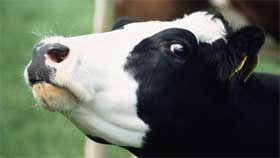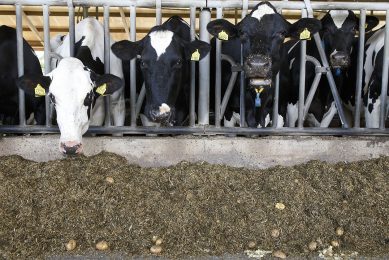Feed sources looked at in BSE investigation

Investigators are looking into the feed source of the California cow who was confirmed to have Bovine Spongiform Encephalopathy (BSE), otherwise know as mad cow disease.
According to Matt Herrick, US Department of Agriculture (USDA), the BSE strain of the California cow was atypical and there is not enough scientific evidence at this point to acknowledge the causes for atypical.
The strain that appeared in the UK in the 1990s and set off a worldwide scare was a form caused by cattle eating rendered protein supplements derived from other cattle. Scientists know less about the "atypical" strain.
It "may or may not be related to feed or forage type," said Larry Hawkins, spokesman for the USDA’s Animal and Plant Health Inspection Service in California.
Officials confirmed that the cow in question was very old (10 ½ years old) for a milk producer and was exhibiting telltale signs of the illness before it was euthanized. Most dairy cows typically experience declining milk production by age 5 and are sent to slaughterhouses to be ground into hamburger.
It was one of dozens that underwent random testing at the transfer site, and the positive results have set off a federal investigation into the source of the neurological disease.
The dairy in question is one of 381 in Tulare County, the No. 1 dairy county in the nation. Most mega-dairies have computerized records which would allow investigators to easily track any offspring the hold cow had in order to keep up her milk production. However Herrick said investigators are laboring through paper records. That fact, combined with the fact that the cow was twice as old as most milk cows in the system, could indicate one of the region’s smaller dairies is the target of the probe.
The World Organization for Animal Health has established protocol for investigations into cases of bovine spongiform encephalopathy that includes finding other cows that the Holstein in question was raised with, tracking down all progeny and determining what she ate.











